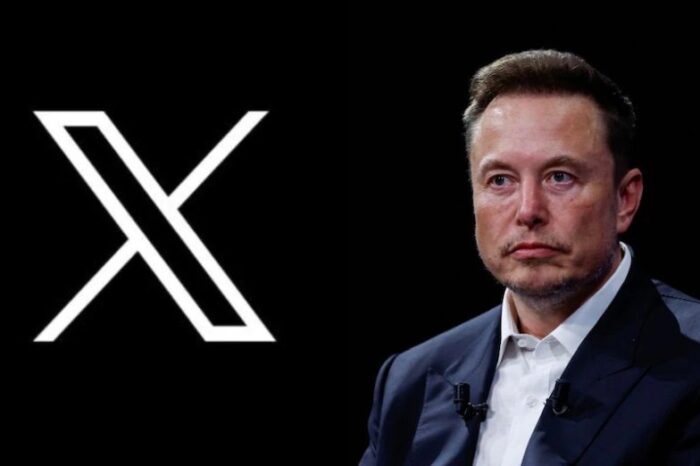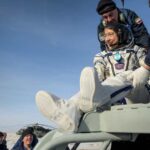NASA astronaut returns to Earth on Russian Soyuz M-25 spacecraft
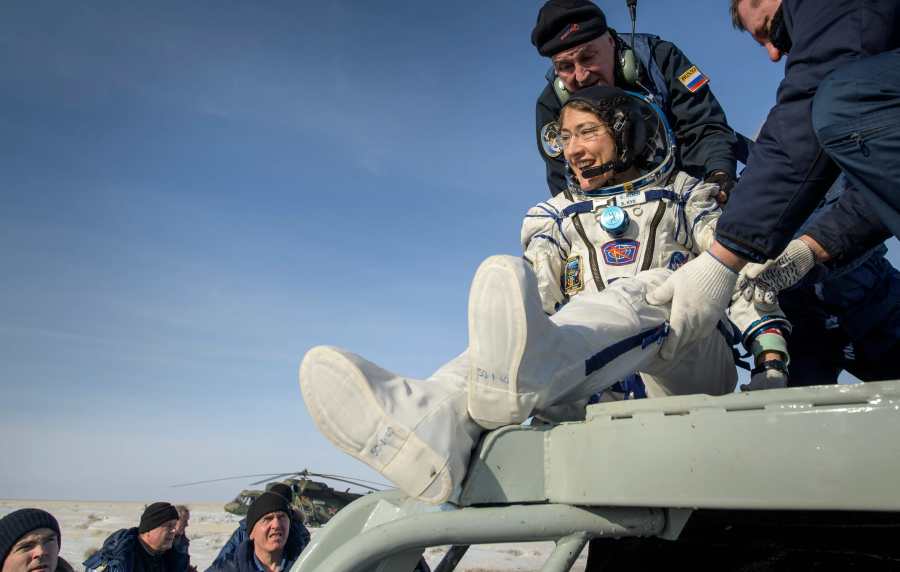
NASA astronaut Tracy Dyson returned to Earth aboard the Russian Soyuz M-25 spacecraft. Dyson, alongside Russian astronauts Oleg Kononenko and Nikolai Chub, landed safely on Monday after departing the International Space Station (ISS).
The capsule, carrying the three astronauts, touched down in the wide open plains of Kazakhstan, marking the end of their mission. The return of Astronaut Dyson on the Russian Soyuz M-25 spacecraft comes amid rising tensions between the U.S. and Russia. It also follows Boeing’s inability to bring back two other NASA astronauts, Butch Wilmore, and Suni Williams, who have been stuck in space due to technical issues.
After undocking from the ISS, the Soyuz capsule landed about 3 1/2 hours later, completing a smooth descent. In the final stage, it descended under a red-and-white parachute at a speed of about 16 mph, with small rockets firing just before touchdown to soften the impact.
Below is a video clip of the astronauts coming out of the capsule after landing in Kazakhstan on Monday.
https://twitter.com/upholdreality/status/1838217675907993625
Upon landing, the astronauts were helped out of the capsule and seated in nearby chairs to help them adjust to gravity. They were then given medical checks in a nearby tent to ensure their well-being.
“It’s been a journey to get here, and we’re excited to have Starliner come home,” said Steve Stich, NASA’s commercial crew program manager.
Wilmore and Williams remain on the space station with six other astronauts. Their return to Earth has been pushed far beyond the initial plan. The pair had arrived in June aboard Boeing’s Starliner capsule, but issues with thrusters and helium leaks delayed their trip home. NASA later deemed it too dangerous for them to return on the Starliner. Wilmore and Williams are now scheduled to come back to Earth next year on a SpaceX spacecraft.
Earlier this month, Boeing’s Starliner capsule returned to Earth without Wilmore and Williams on board. The capsule, in autopilot mode, successfully landed at New Mexico’s White Sands Missile Range on September 7, six hours after leaving the ISS.
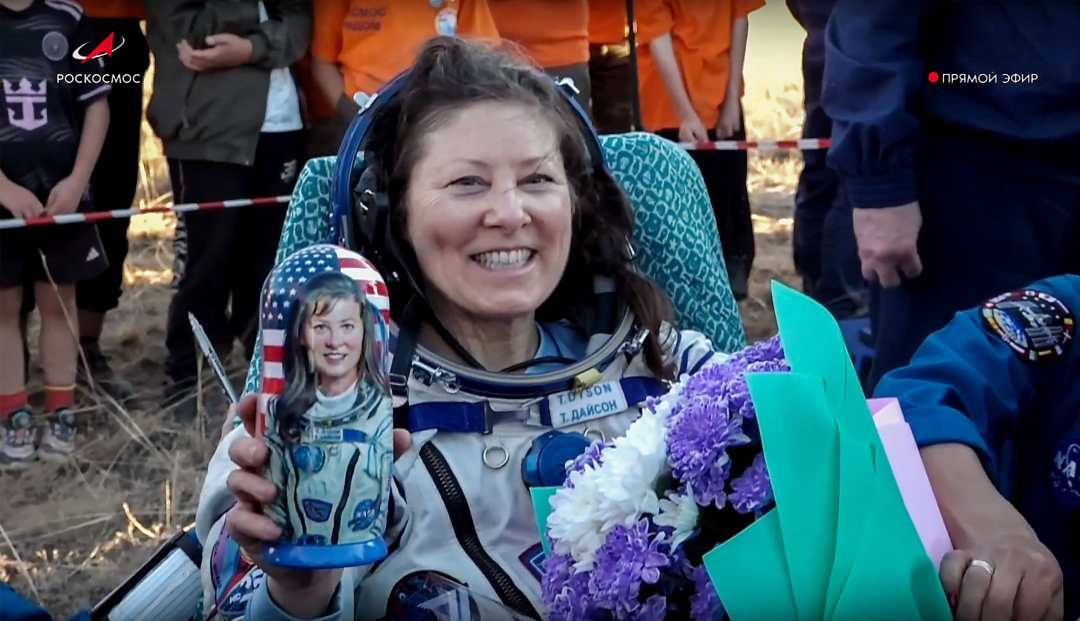
In this photo released by Roscosmos, NASA astronaut Tracy Dyson holds a Matryoshka doll made in her likeness, following the landing of the Russian Soyuz MS-25 capsule. Dyson, along with Roscosmos cosmonauts Oleg Kononenko and Nikolai Chub, touched down southeast of Zhezkazgan, Kazakhstan, on Monday, Sept. 23, 2024.
Meanwhile, considering the ongoing war in Ukraine, where the U.S. has firmly supported Ukraine against Russia, the return of NASA astronaut Tracy Dyson aboard a Russian spacecraft adds an unusual layer of complexity. With U.S.-Russia relations at a low point, some might view it as awkward for an American astronaut to rely on Russian technology for the trip back to Earth.
Still, the long-standing cooperation between NASA and Roscosmos, particularly on missions to the International Space Station (ISS), has consistently moved forward, even through past geopolitical tensions. This partnership highlights how space exploration often rises above political conflict, prioritizing scientific achievement over diplomatic disagreements.
While the war introduces an undeniable geopolitical backdrop, Dyson’s return aboard the Soyuz capsule isn’t necessarily an embarrassment. Instead, it reflects the reality of ongoing collaboration in space exploration, even in times of conflict. There may be some irony in the situation given the current tensions, but ultimately, the mission underscores the importance of international partnerships that have endured despite global challenges.
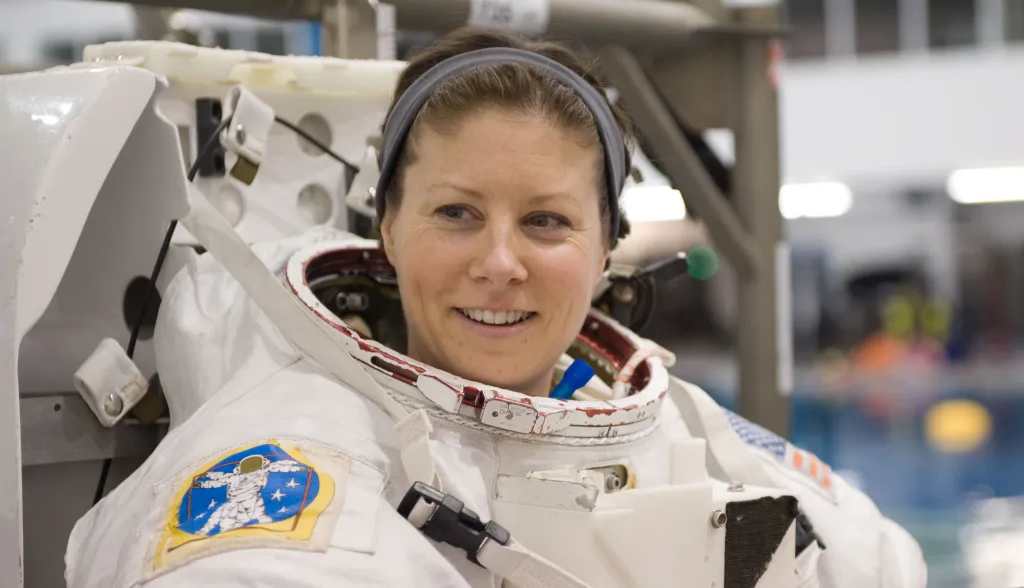
NASA astronaut Tracy Dyson



